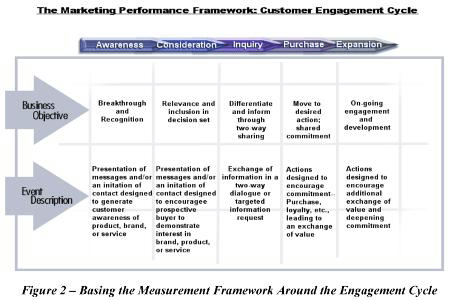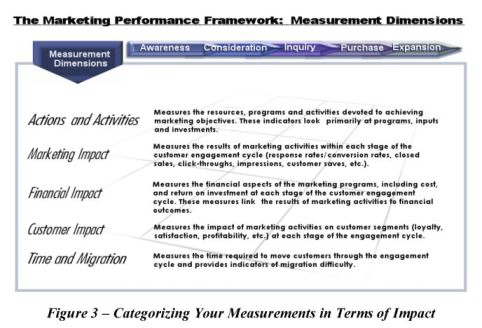
Loyalty, word-of-mouth, greater sales... These are just some of the benefits for companies when their clients identify with them. "Organizational identification," or the sense of connection between a customer and a company, can impact corporate actions and stakeholder responses and should form part of marketing strategy decisions.
In the article "Antecedents and Consequences of Customer-Company Identification: Expanding the Role of Relationship Marketing," published in the Journal of Applied Psychology, authors Michael Ahearne of University of Houston, C.B. Bhattacharya of Boston University and Visiting Professor of IESE, and Thomas Gruen of University of Colorado at Colorado Springs analyze customer-company (C-C) relationships. They research whether customers identify with companies, why and what the consequences are.
Previous studies have suggested that customers may define themselves partly by the companies they patronize. From an applied psychology standpoint, individuals sometimes turn to companies in their quest to enhance their social identity.
And companies should take note, for this sense of identification is a potentially useful route to building stronger customer relationships and expanding the domain of relationship marketing.
In this study, Bhattacharya, Ahearne and Gruen present a conceptual framework and empirical test of customer-company identification. Their model proposes that C-C identification is determined by three general factors. The first relates to the customer's perceptions about what the company represents. The second deals with customer's perceptions of what others think about the organization, called the external image of the company. The third reflects the impact of "boundary spanning agents," which are the salespeople, customer service or technical representatives who interact with customers. These agents reveal a lot about the quality and character of the company they represent.
The model proposes that C-C identification is more likely to occur under certain conditions, such as when the product or service is important to the customer, when the customer can make a set of relevant comparisons, and when customers frequently interact with the company.
Ahearne, Bhattacharya and Gruen tested the model in the context of pharmaceutical companies, specifically pharmaceutical sales reps calling on physicians. The pharmaceutical industry, in which the physician is the "decider" but not the final consumer of the product, is similar to many consultative purchasing situations, such as with travel agents, independent insurance agents, stock brokers and so on.
The research shows that customers do indeed identify with companies and that such identification has strong, positive consequences, both in terms of in-role (e.g., product utilization) and extra-role (e.g., word-of-mouth) behaviors. "Specifically, we demonstrate that customers who identify more strongly with a company tend to purchase more and recommend both the company and its products more often," they write.
The study also provides strong evidence that customers are willing to take the extra step to support the company if they are attracted to the characteristics of the "boundary-spanning agent." In other words, if a company has good salespeople, customer identification is more likely to occur.
Companies can also satisfy individuals' self-definitional needs. Self-definition is defined as the need for self-continuity, self-distinctiveness and self-enhancement. When a person's self-concept is enhanced by the organization's defining characteristics, the individual is drawn to it because it provides easy opportunities for self-expression. Customers are especially attracted to companies that have distinctive characteristics, such as culture, strategy or structure.
This article demonstrates that when customers identify with companies, they
are more loyal and more likely to advocate the company's products or services to
others.
Additional Information:
Interested in more research studies like these? If so, sign up for the
IESE INSIGHT Newsletter, a free service of IESE Business School, University
of Navarra.

![]()
A large retail bank had a problem. Its customer service division was concentrating so much on operational efficiencies, such as shorter hold times, quicker speed to answer and more calls per agent, that it was failing to effectively capture and share the customer interaction information necessary to help measure and make progress against strategic customer objectives.
It had become obsessed with those efficiencies to the detriment of capturing and sharing interaction data. The problem was that nobody had ever taken the time to quantify the impact that the absence of a more coordinated approach to measurement and learning was having on financial performance.
Recognizing the need for such an approach was a major step in the bank’s successful realignment, organizing its business in such a way that all its departments worked together, having a shared investment and a shared goal. The key triggering event was the discovery by senior marketing executives that customer service, which had the tools, data access and skills to independently create its own outbound solicitations, had begun to implement its own ad-hoc telemarketing programs to compensate for what it saw as the shortfall in direct mail programs, without reference to their marketing colleagues and to strategic customer objectives.
This example illustrates one of the biggest challenges in creating a customer measurement “ecosystem” to effectively orchestrate cross-functional efforts, namely that the associated information needs, metric definitions and uses vary so much across functions and levels.
Figure 1 shows how complex this can be.

Once executives at the retail bank recognized that the lack of effective customer measurement meant uncoordinated activity, lost opportunity and lower EBITDA (earnings before interest, taxes, depreciation and amortization), measurement and learning immediately took on a different character and a much higher profile. Now managers could collectively unite on the downside of not effectively cooperating around, and operationalizing, the measurement and closed-loop learning process.
As a result, the company created a new function within marketing that would play a key liaison role with customer service, keeping the customer service apprised of marketing’s tactical plans and engaging the two departments in continuous dialogue about measurement, customer intelligence and the opportunities presented by customer interactions. The dialogue helped answer key strategic questions, validating or discrediting historic assumptions and “gut-feel” about the drivers and motivations behind observed customer behavior.
The creation of that new role bore fruit in a number of ways. It certainly addressed the need for partnership in measurement and learning, over time turning that capability to the benefit of customer service, which became much more agile at prioritizing and shaping customer interactions based on a detailed and quantified understanding of what was working and what wasn’t. Now there is a shared investment and stake in an objective measurement and learning process that includes both qualitative and quantitative analysis of the data initially captured by customer service but now seamlessly shared with marketing.
You can best achieve the alignment illustrated in this example by adopting the kind of framework shown in Figure 2, which approaches the measurement challenge from a customer engagement standpoint. The value of this kind of framework is that it lays the foundation for measures at all of the levels and functions involved in creating and executing customer strategy and measuring resulting performance.


Once you have laid out the vision in this way, the next step is to populate the framework with the key categories of metrics that will be needed to track performance. Those categories are shown and explained in Figure 3.

Filling out this framework can be a fairly involved process, but it provides the necessary backbone and discipline for defining the right measurement approaches at all levels and stages of customer engagement.
The principles upon which the most successful customer measurement frameworks are built take account of, and directly address, these challenges by ensuring the following:
These principles and frameworks can greatly help your organization manage and measure the effect of your customer investments. With them, you can identify, and link, critical measures that can allow you to assess progress step by step, at differing organization levels and across different functions. They also provide a sound basis for linking metrics together into a strong chain that can easily aggregate and translate into the kinds of measures that are most relevant for key decision-makers across all functions and levels.
Additional Information:
Niall Budds, vice president of marketing effectiveness, Quaero, brings
extensive corporate and consulting experience on applying best practice
techniques to deliver optimal relationship marketing and customer strategies for
both client and employer organizations. He has deep global experience working
with the senior management teams of leading international organizations in the
financial services, telecommunications and travel sectors.
As previously published on CRMGuru.com
![]()